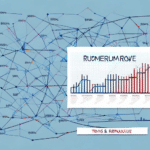Understanding the Habits of Seasonal Customers to Maximize Profits
If you're a business owner, understanding your customers is key to unlocking success. For businesses reliant on seasonal customers, this understanding becomes even more crucial. Seasonal customers—those who purchase your products or services primarily during specific times of the year—can be a significant revenue source. But how can you analyze their habits and behaviors to maximize profits?
What are Seasonal Customers and Why are They Important for Your Business?
Seasonal customers are individuals who make purchases from businesses only during particular periods of the year. For example, a winter sports gear shop may see a surge in sales during the winter months, while a beach vacation rental company may attract most of its customers during the summer season.
The importance of seasonal customers lies in their potential to significantly contribute to a business's bottom line. According to a Shopify report, up to 30% of annual revenue for some businesses can come from seasonal sales. By understanding their behaviors and motivations, business owners can develop strategies to maximize these customers' purchases and, ultimately, their revenue.
One effective way to attract seasonal customers is by offering promotions and discounts during their peak buying periods. For instance, a clothing store might run a winter sale to draw in customers during colder months. Additionally, tailoring marketing efforts to target seasonal customers specifically—such as creating seasonal-themed advertisements or social media campaigns—can enhance engagement and drive sales.
How to Identify the Different Types of Seasonal Customers
Not all seasonal customers are the same. Recognizing the different types of seasonal customers can help businesses tailor their marketing and sales strategies effectively.
- Vacationers: These customers visit a destination and make purchases during their stay. They may seek souvenirs, local experiences, and services that enhance their vacation.
- Recreationists: Individuals who purchase products or services to engage in specific hobbies or activities during a particular season, such as skiing equipment in winter or gardening tools in spring.
- Gift-Givers: Customers who make purchases primarily during holidays or events, such as Christmas, Valentine's Day, or Mother's Day.
Identifying which type of seasonal customer your business caters to is crucial, as each group has distinct needs and preferences. For example, vacationers might prioritize unique experiences and souvenirs, while recreationists may focus on specialized equipment. Gift-givers often look for promotions and discounts during holiday seasons to find the perfect gift.
Factors that Influence Seasonal Customer Behavior
Understanding the factors that drive seasonal customer behavior allows business owners to anticipate needs and adjust strategies accordingly. Key factors include:
- Weather Conditions: Seasonal changes can directly impact purchasing behaviors. For example, a particularly snowy winter can boost sales for winter sports gear, while a mild winter may lead to lower demand.
- Competitive Pricing: Competitive and seasonal discounts can attract more customers. According to a Forbes Business Council article, dynamic pricing strategies during peak seasons can optimize sales and profits.
- Economic Conditions: The overall economic environment influences consumer spending. During economic downturns, even seasonal sales may decline, while a booming economy can enhance purchasing power.
- Cultural Events and Traditions: Holidays and cultural events can shape consumer purchasing patterns. For instance, Christmas leads to increased sales in gifts and decorations, while summer encourages spending on outdoor activities and travel-related products.
- Product Trends and Innovations: The introduction of new products or trends can drive seasonal purchases. For example, the latest fashion trends in spring and summer or new tech gadgets during the holiday season can attract customers looking for the latest offerings.
Techniques to Track and Analyze Seasonal Customer Data
To effectively understand seasonal customer behaviors, businesses should employ data tracking and analysis techniques such as segmentation and targeted marketing.
- Customer Segmentation: Segmenting customers based on location, purchasing history, or demographics allows businesses to create targeted marketing campaigns tailored to specific groups.
- Social Media Monitoring: Analyzing social media interactions and engagement can provide insights into customer sentiment and preferences. Tools like Hootsuite or Buffer can help track these metrics.
- Sales Data Analysis: Reviewing historical sales data helps identify purchasing patterns and peak seasons, enabling more accurate forecasting and inventory management.
- Customer Feedback: Collecting feedback through surveys or reviews provides direct insights into customer experiences and areas for improvement.
By leveraging these techniques, businesses can make informed decisions that enhance marketing effectiveness and customer satisfaction.
Strategies to Attract and Retain Seasonal Customers
Attracting and retaining seasonal customers requires a combination of excellent customer service, personalized offerings, and effective marketing strategies.
- Exceptional Customer Service: Providing a warm and welcoming environment encourages repeat business. Training staff to be attentive and responsive during peak seasons can enhance customer experiences.
- Personalized Promotions: Tailoring promotions to individual customer preferences, such as offering discounts on frequently purchased items, can increase loyalty. Implementing seasonal loyalty programs can also incentivize repeat purchases.
- Leveraging Social Media: Engaging content and targeted ads on platforms like Facebook, Instagram, and Twitter can reach a broader audience. Collaborating with influencers can further amplify brand awareness and attract new customers.
Implementing these strategies not only attracts seasonal customers but also fosters long-term loyalty, ensuring sustained revenue throughout the year.
Best Practices for Engaging with Seasonal Customers Online and Offline
Successful engagement with seasonal customers requires a seamless experience both online and offline.
- Online Engagement: Utilize social media and email marketing to provide relevant promotions and updates. Creating a user-friendly website with easy navigation and mobile optimization ensures customers can interact effortlessly.
- Offline Engagement: In-store displays and signage should reflect seasonal themes and provide clear information about promotions. Staff should be trained to assist customers effectively during peak times.
- Gathering Feedback: Encourage customers to provide feedback through online surveys or in-person interactions. Utilize this feedback to make continuous improvements to products and services.
By maintaining consistent and high-quality engagement across all channels, businesses can enhance the overall customer experience and increase satisfaction.
Managing Inventory and Stocking Up for Peak Season Demand
Effective inventory management is crucial to accommodate the demand surge during peak seasons.
- Demand Forecasting: Use historical sales data and market trends to predict demand, ensuring adequate stock levels without overstocking.
- Inventory Management Software: Implementing software solutions like Shopify Inventory Management can streamline stock monitoring and reorder processes.
- Pre-Orders and Reservations: Offering pre-orders for popular items can help manage inventory more effectively and create anticipation among customers.
- Balancing Stock Levels: Avoid excess inventory by closely monitoring sales trends and adjusting orders as needed. This minimizes costs and reduces waste.
Proper inventory management ensures that businesses can meet customer demands promptly, enhancing satisfaction and boosting sales during peak seasons.
Pricing Strategies to Maximize Profits from Seasonal Customers
Strategic pricing is essential to maximize profits while maintaining customer satisfaction during peak seasons.
- Dynamic Pricing: Adjust prices in real-time based on factors like demand, competition, and inventory levels. This approach ensures optimal pricing that maximizes profits without deterring customers.
- Value-Based Pricing: Set prices based on the perceived value of the product to the customer. Highlighting unique features and benefits can justify higher price points and enhance customer satisfaction.
- Promotional Pricing: Offer discounts, bundle deals, or limited-time offers to incentivize purchases. According to a Harvard Business Review article, well-timed promotions can significantly boost seasonal sales.
Implementing these pricing strategies allows businesses to cater to varying customer segments effectively, ensuring both profitability and customer satisfaction.
Creating Personalized Offers and Incentives for Repeat Seasonal Customers
Repeat seasonal customers are a valuable asset, and personalized offers can enhance their loyalty and lifetime value.
- Customized Promotions: Analyze purchase history and preferences to offer tailored discounts or exclusive deals on favored products.
- Loyalty Programs: Implement points-based or tiered loyalty programs that reward customers for repeat purchases. These programs can provide increasing benefits, fostering a sense of exclusivity and appreciation.
- Exclusive Access: Offer early access to new products or special events for loyal customers, enhancing their overall experience and encouraging continued patronage.
By focusing on personalized incentives, businesses can strengthen relationships with repeat customers, ensuring sustained revenue during peak seasons.
Leveraging Social Media Platforms to Reach Out to Potential and Existing Seasonal Customers
Social media is a powerful tool for connecting with both potential and existing seasonal customers.
- Targeted Advertising: Utilize platforms like Facebook Ads and Twitter Ads to create targeted campaigns based on demographics, interests, and behaviors.
- Influencer Collaborations: Partner with influencers who resonate with your target audience to amplify your reach and build trust.
- Engaging Content: Share seasonal content that highlights your products, services, and promotions. Interactive posts, such as polls or giveaways, can increase engagement and visibility.
- Customer Interaction: Respond promptly to inquiries and comments, fostering a community atmosphere and enhancing customer relationships.
Effectively leveraging social media can expand your reach, engage your audience, and drive sales during peak seasons.
Importance of Customer Feedback in Enhancing the Seasonal Customer Experience
Customer feedback is vital for understanding and improving the seasonal customer experience.
- Surveys and Reviews: Encourage customers to provide feedback through online surveys or review platforms. Tools like SurveyMonkey can facilitate this process.
- Feedback Analysis: Analyze feedback to identify common concerns, preferences, and areas for improvement. This data can inform product development and service enhancements.
- Responsive Actions: Address negative feedback promptly and implement changes based on constructive suggestions. Demonstrating responsiveness can build trust and loyalty.
Utilizing customer feedback helps businesses adapt to customer needs, enhancing satisfaction and fostering long-term loyalty.
Common Mistakes Businesses Make with Their Seasonal Customer Strategy
Avoiding common pitfalls is essential for an effective seasonal customer strategy. Common mistakes include:
- Inadequate Inventory Management: Failing to stock enough inventory can lead to lost sales, while overstocking results in increased costs and waste.
- Poor Pricing Strategies: Incorrect pricing can deter customers or erode profits. It's crucial to balance competitive pricing with profitability.
- Ignoring Customer Feedback: Overlooking feedback can result in repeated mistakes and decreased customer satisfaction.
- Lack of Personalized Marketing: Generic marketing efforts may fail to resonate with specific customer segments, reducing engagement and effectiveness.
- Insufficient Online Presence: Neglecting online channels can limit reach and miss opportunities to engage with tech-savvy customers.
By recognizing and addressing these common mistakes, businesses can optimize their seasonal strategies for better outcomes.
Future Trends in Understanding and Engaging with Seasonal Customers
As consumer behaviors and technologies evolve, so do the strategies for understanding and engaging with seasonal customers. Future trends to watch include:
- Artificial Intelligence and Automation: AI-driven tools can provide deeper insights into customer behaviors and enable more personalized marketing efforts.
- Eco-Friendly and Sustainable Practices: An increasing number of consumers prioritize sustainability. Businesses adopting eco-friendly practices can attract environmentally conscious seasonal customers.
- Omnichannel Experiences: Seamless integration of online and offline channels will enhance the customer journey, providing a cohesive experience across all touchpoints.
- Enhanced Data Analytics: Advanced analytics will offer more precise forecasting and customization, allowing businesses to anticipate and meet customer needs more effectively.
- Mobile Commerce: With the rise of mobile shopping, optimizing for mobile experiences will be critical in reaching and engaging seasonal customers.
Staying ahead of these trends will enable businesses to adapt their strategies, ensuring continued success in engaging with seasonal customers.
In conclusion, understanding and engaging with seasonal customers is essential for business success. By identifying different seasonal customer types, tracking and analyzing customer data, and implementing effective marketing and pricing strategies, businesses can maximize profits and build lasting customer loyalty. For more insights and strategies on customer behavior, visit our ShipScience Blog.




















